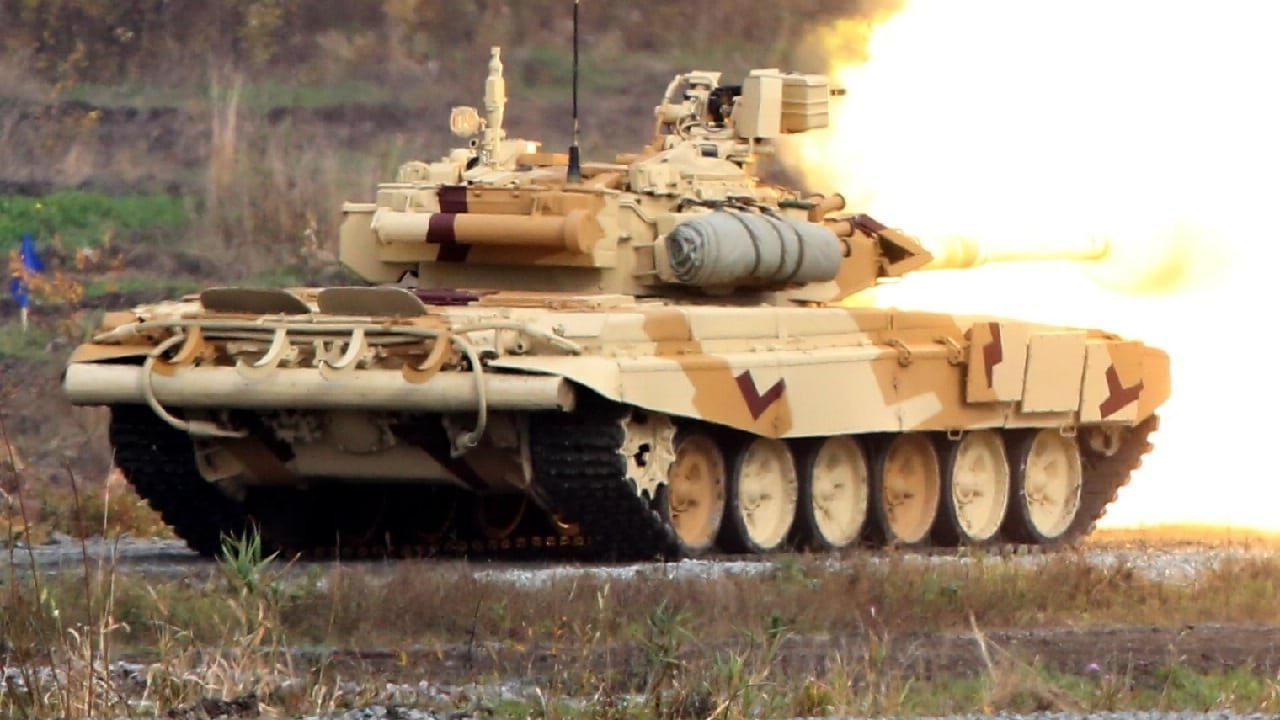Over the last year and a half, the Kremlin has boasted that its fleet of main battle tanks (MBT) could smoke out competitors in its Ukraine invasion.
Initially, Russian forces claimed that its newer T-90 armored vehicles would dominate Kyiv’s domestic and foreign-delivered arsenal.
However, as more and more of Moscow’s tanks were destroyed, captured, and left behind, the Kremlin turned its attention to antiquated models that had been previously relegated to storage.
These Soviet-era T-54 and T-55 MBTs surprised many analysts when they surfaced in the war and as expected, these aging mothballs did not fare well against Ukraine’s possession of superior models.
Russia’s T-90 Has Not Performed Well in Ukraine
While none of Moscow’s tanks have performed as expected, one MBT has particularly suffered at the hands of Ukraine’s advanced anti-tank weaponry. The T-90 third-generation armored vehicle is rooted in Soviet-era programs but did not enter service until after the collapse of the USSR. On paper, the T-90 is a powerful force, equipped with composite armor materials, reactive armor, smoke grenades, and other enhanced attributes. Similar to other Russian weapon systems, however, the MBT’s true capabilities differ from its technical stats.
The T-90 superficially resembles its T-72 and T-80 predecessors but is equipped with a range of improvements. Its 125mm smoothbore main gun, Shtora-1 countermeasures suite, and diesel engines are just a few of the T-90’s capabilities that set it apart from other Russian armored vehicles.
Prior to the Ukraine invasion, Russia deployed the T-90 to Checnya where it reportedly suffered. Some industry experts have reported that Chechen fighters were able to disable and destroy the Russian MBT with rocket-propelled grenades. The Kremlin has obviously dismissed these claims, but considering the tank’s performance in Ukraine they may not be so off base.
Another T-90 Bites the Dust in Ukraine’s Counter-Offensive
As Ukraine’s counter-offensive began to heat up in early June, Moscow’s already limited tank fleet took an even greater plunge.
This month, the Ukrainian Defense Ministry published a video on social media, claiming that the “Operators of the ‘Rarog’ strike drone company of the 24th Mechanized Brigade damaged the newest Russian tank T-90, and prevented its evacuation with another hit.”
In the short clip, an unmanned aerial vehicle (UAV) appears to strike a T-90 tank in an undisclosed location.
A second drone later strikes the damaged tank.
Ukraine’s Defense Ministry proudly noted that “Two drones worth several thousand dollars destroyed a tank worth three million dollars.”
Drones Matter
UAVs have played a major role for both sides of the ongoing war in part due to their cheap price tags. Ukrainian forces have even reworked cheap commercially-produced UAVs to become quite sophisticated surveillance and reconnaissance airborne collectors. In addition to Kyiv’s fleet of drones, the country’s arsenal of advanced anti-tank weapons has been used frequently to cut down Moscow’s armored fleet. Since the invasion began back in February 2022, the U.S. and its North Atlantic Treaty Organization allies have provided billions of dollars worth of cutting-edge military equipment to aid Kyiv’s defensive efforts, including the FGM-148 Javelin, Switchblade UAVs, and HIMARS.
Operators of the “Rarog” strike drone company of the 24th Mechanized Brigade damaged the newest russian tank T-90, and prevented its evacuation with another hit.
Two drones worth several thousand dollars destroyed a tank worth three million dollars. This is what modern warfare… pic.twitter.com/WjKKSHg2ak— Defense of Ukraine (@DefenceU) July 12, 2023
Maya Carlin, a Senior Editor for 19FortyFive, is an analyst with the Center for Security Policy and a former Anna Sobol Levy Fellow at IDC Herzliya in Israel. She has by-lines in many publications, including The National Interest, Jerusalem Post, and Times of Israel. You can follow her on Twitter: @MayaCarlin.

